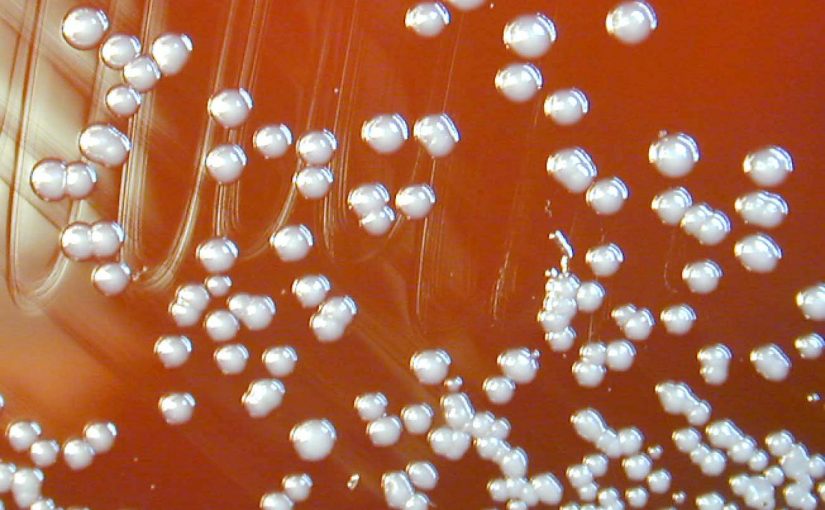Gold Coast Health Microbiologist, Dr Sam Maloney was about to go away on 2 weeks’ leave when an unusual bacterium turned up in his laboratory at Gold Coast University Hospital (GCUH).
The bug in question was Burkholderia cepacia, a type of bacteria that is usually found in soil, water or other liquids. It is not commonly found in blood samples sent to pathology labs but in this case, it had been found in patient blood samples. 1
The patients in question were in the hospital’s intensive care unit (ICU) and were quite unwell. It was suspected that they had contracted an infection in the ICU, which is why the blood samples were sent for bacterial culture.
However, the characteristics of the B. cepacia organism and the fact that both patients were getting better on antibiotics that wouldn’t have usually treated this organism led to a suspicion that the blood samples had somehow been contaminated.
This is a rare occurrence in pathology labs and an investigation swiftly commenced to find the source of contamination, beginning with testing equipment and materials in the laboratory environment.
Dr Maloney returned from leave and was surprised to discover that despite extensive testing the cause had not been found but several more cases of B. cepacia in blood had arisen.
Professor Ramon Shaban is Clinical Chair in the Department of Infection Control at Gold Coast Health and says staff were working hard to find the cause.
“This is an environmental, water-based organism, so it’s unusual to see it as a bacteraemia (bacteria in the blood). We tested IV fluids and non-sterile gels that have been associated with outbreaks around the world, and were working our way through products to find the cause. We also contacted our peers and soon learned that other cases had been identified across Queensland and interstate, which supported our working hypothesis that this was a point source outbreak.”
A point source outbreak is where patients are exposed to a single source of the bacteria in a brief time period and there is no spread from person to person.
The search intensified and widened, and the culprit was quickly identified, Dr Maloney said:
“Ramon and I went to see a doctor who had been treating one of the patients and put in a central line the day before, when a blood sample was also taken. We asked the doctor to show us what equipment he used and where he had got it. We collected all these items including the ultrasound gel and took everything back to the lab to be tested. The next day I was surprised when Brian Gorman, a senior scientist let me know that we had a suspicious organism growing from the ultrasound gel that was labelled ‘sterile’. This was the gel that was used during ultrasound guided cannulation, and the suspicious organism turned out to be Burkholderia cepacia.”
A central line is a catheter inserted into the vein of a patient needing supply of medication or fluids over an extended period. The process is called cannulation and when ultrasound imaging guides the process a gel is used.
The fact that this product, which was supposed to be sterile but was not, was manufactured internationally was a serious concern to the team, who immediately issued a formal alert to other hospitals across the country.
In-depth microbiological testing was able to establish that the patients from GCUH and the other cases were all affected by the same bacteria and that the ultrasound gel was the common cause.
The Gold Coast Health team notified the Australian Therapeutic Goods Administration (TGA). Approximately 1400 kits containing the gel had been distributed to a dozen hospitals across Australia and within 36 hours the TGA had issued a recall for all these kits.
Ultimately, at least 12 patients tested positive for the bacteria but only one person had symptoms that were directly attributed to B. capacia and they have since recovered.
Dr Maloney said; “In cases like these the doctor is sending a blood sample to pathology because their patient is ill and they need to know why. With an unusual organism like this it is less clear if that is what is causing the illness, so you need to use all the pathology results as well as any other investigations that might be relevant such as diagnostic imaging, to build a full picture of what could be causing symptoms to ensure the patient gets the right treatment.”
Prof Shaban noted that the process was challenging with an unusual bug affecting a range of patients:
“The patients had few common clinical characteristics, which made it more difficult to track down the cause of the infection.”
The fast and systematic approach of the team at Gold Coast Health may well have saved lives. Bacteraemia (bacteria in the blood) is a serious condition and can be life-threatening. Had the contaminated gel not been recalled many more patients would have been affected.
Reference
- Shaban RZ, Maloney S, Gerrard J, Collignon P, Macbeth D, Cruickshank M, Hume A, Jennison AV, Graham RMA, Bergh H, Wilson HL, Derrington P. (2017). Outbreak of healthcare-associated Burkholderia cenocepacia bacteraemia and infection attributed to contaminated ‘sterile’ gel used for central line insertion under ultrasound guidance and other procedures. American Journal of Infection Control, Accepted 24 June, 2017.

